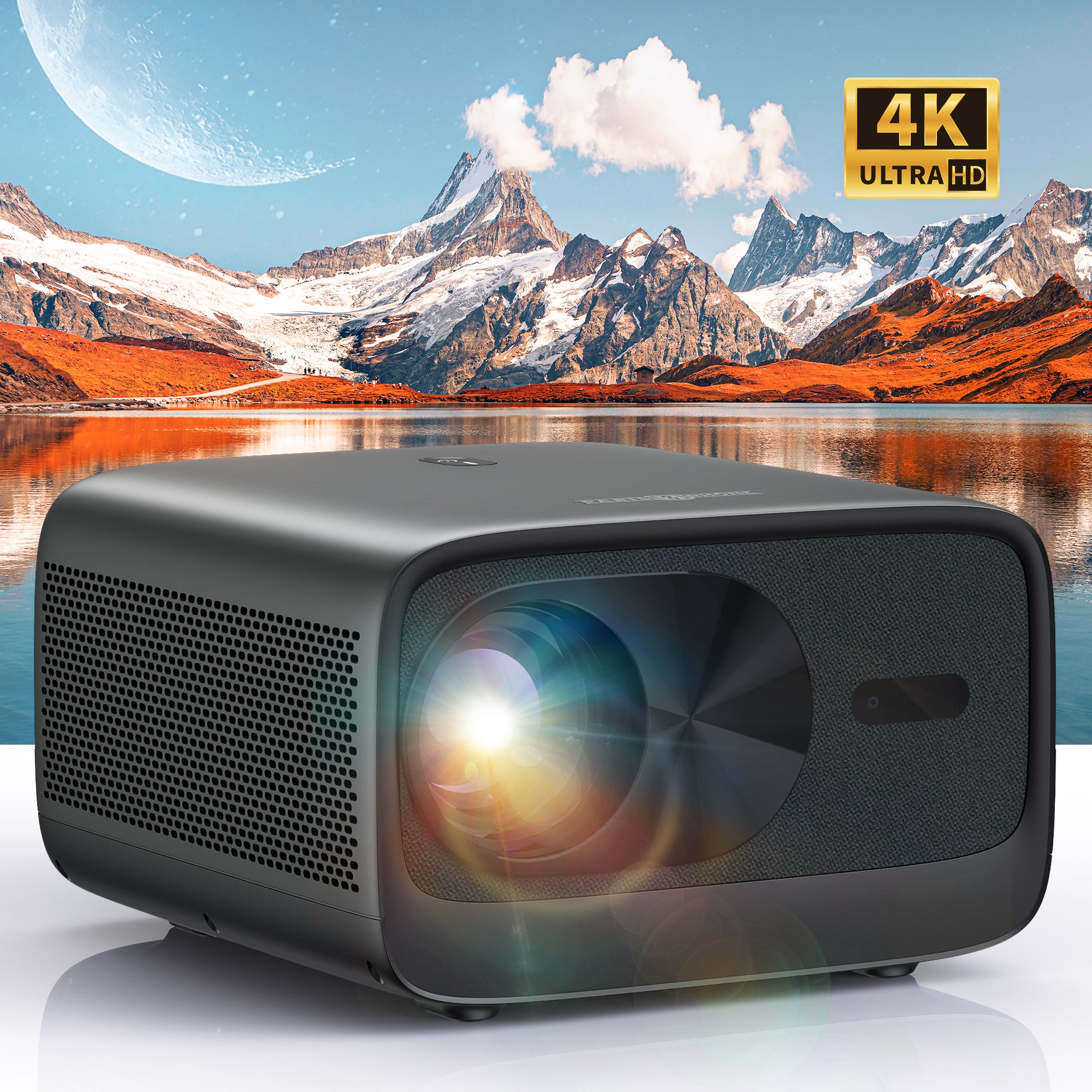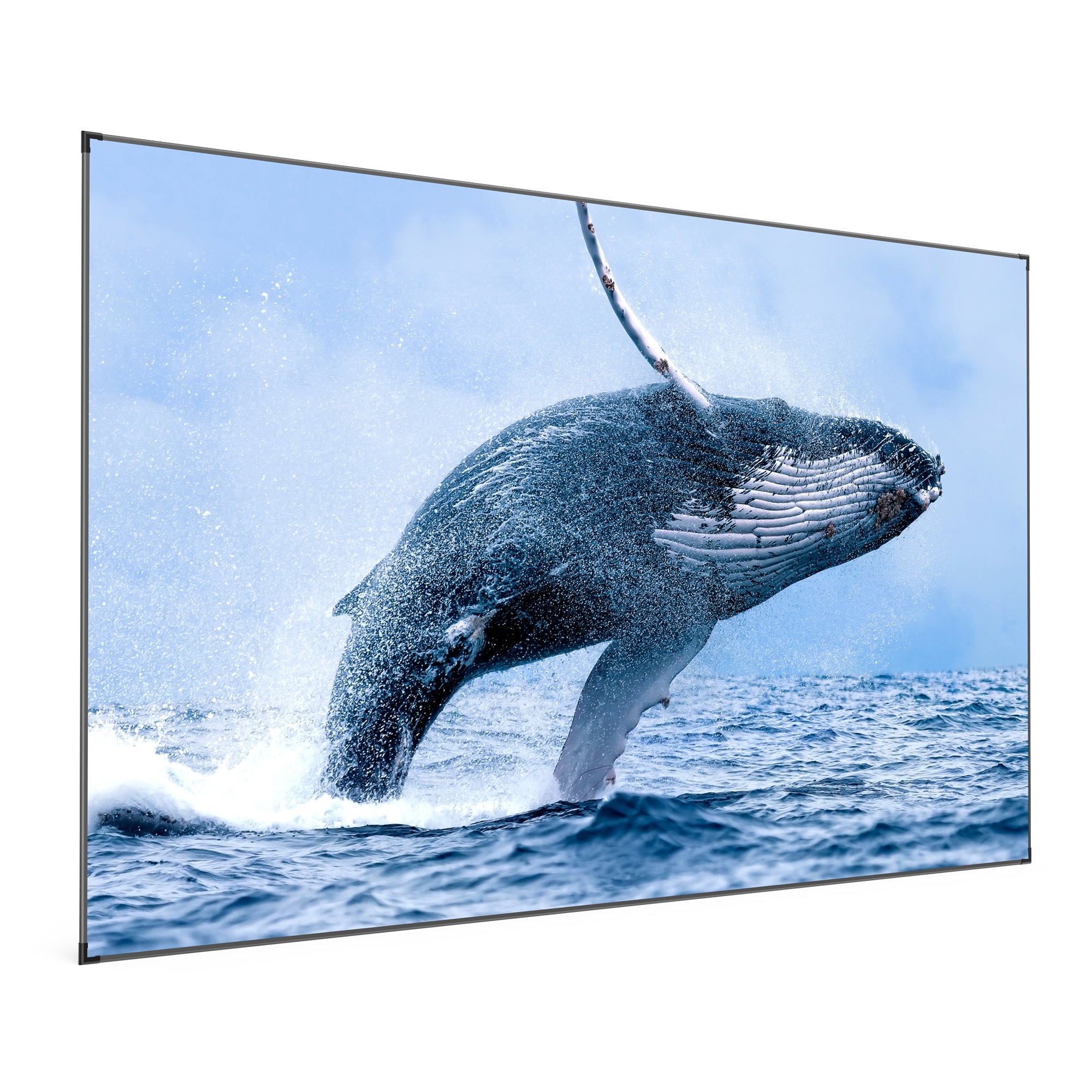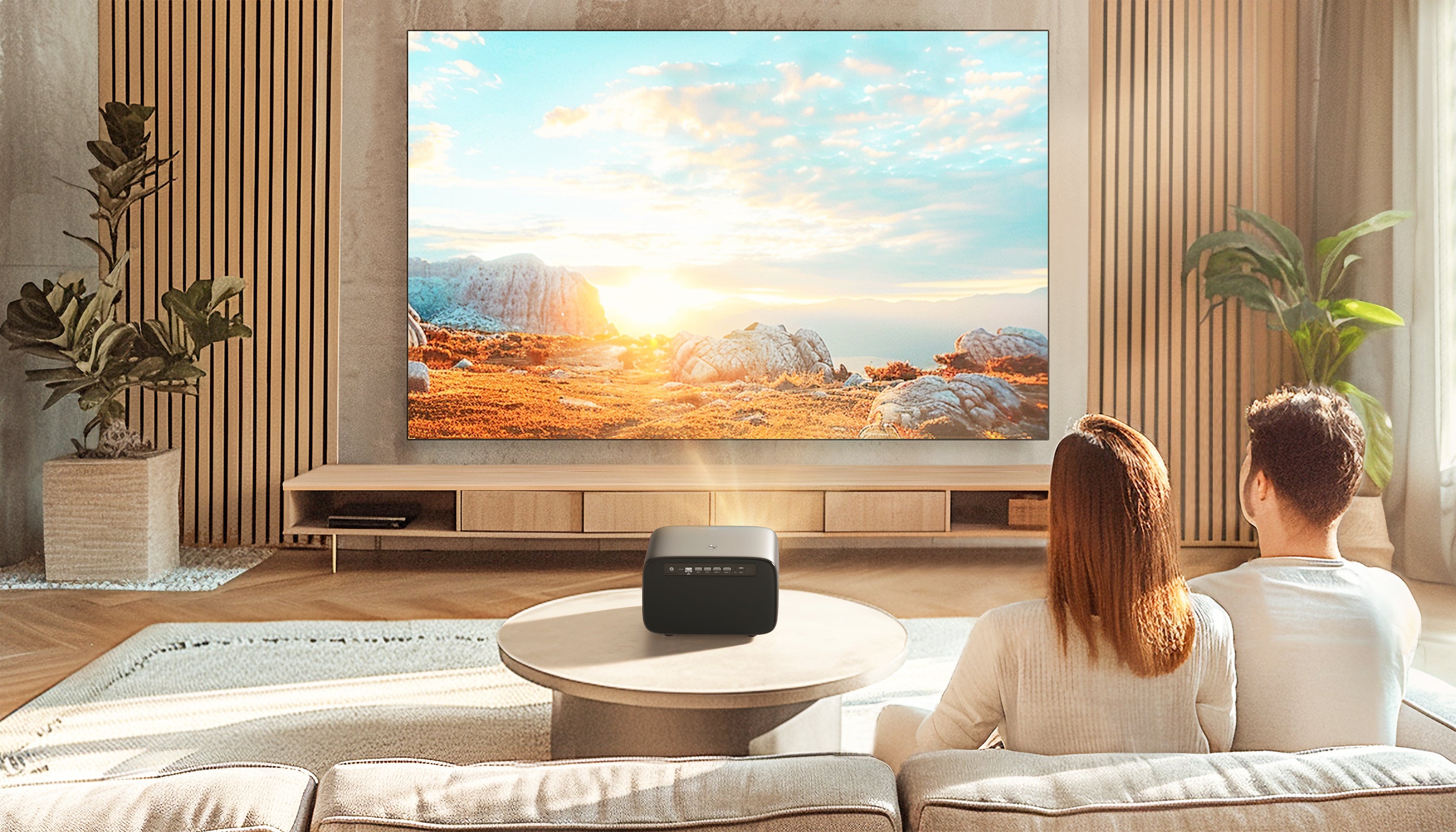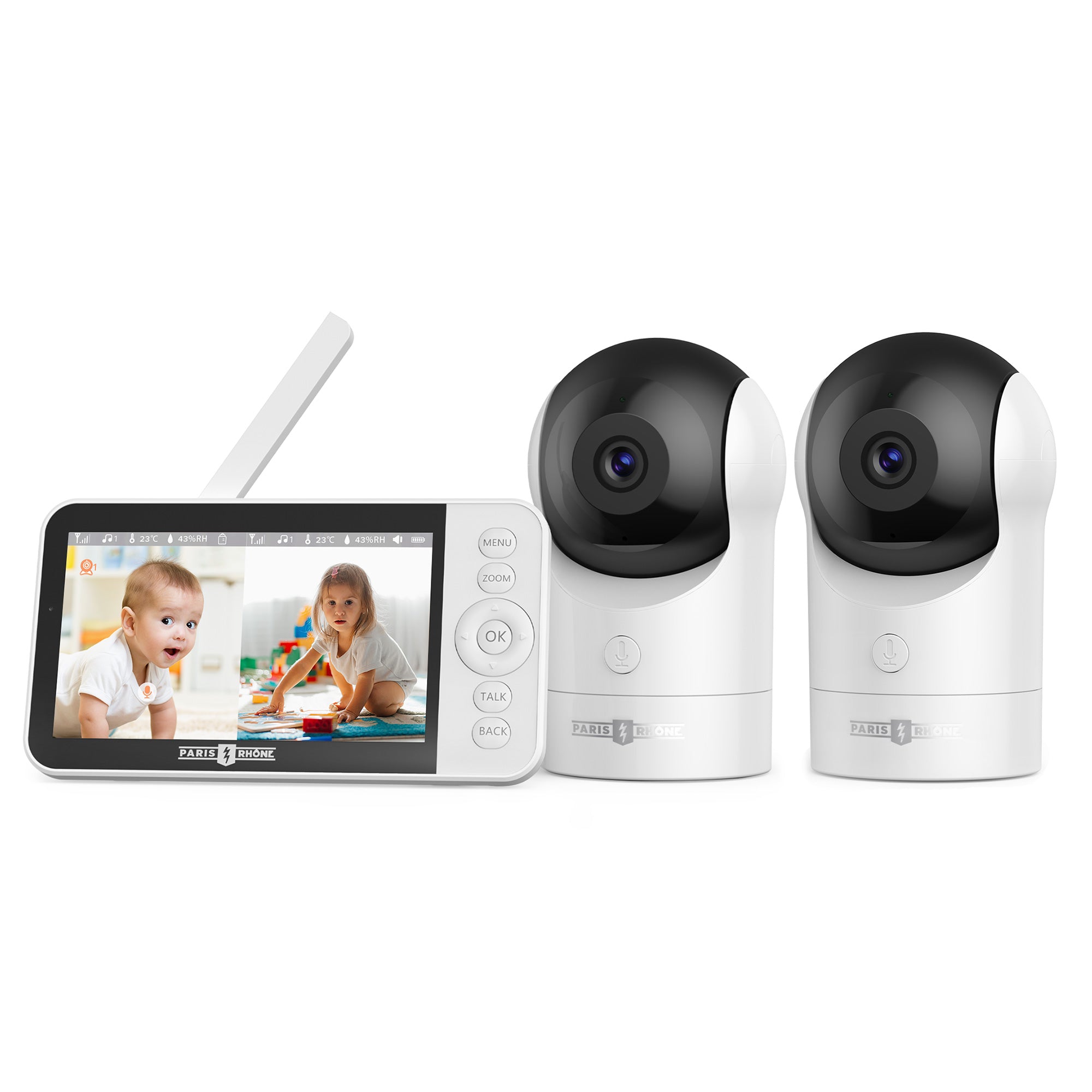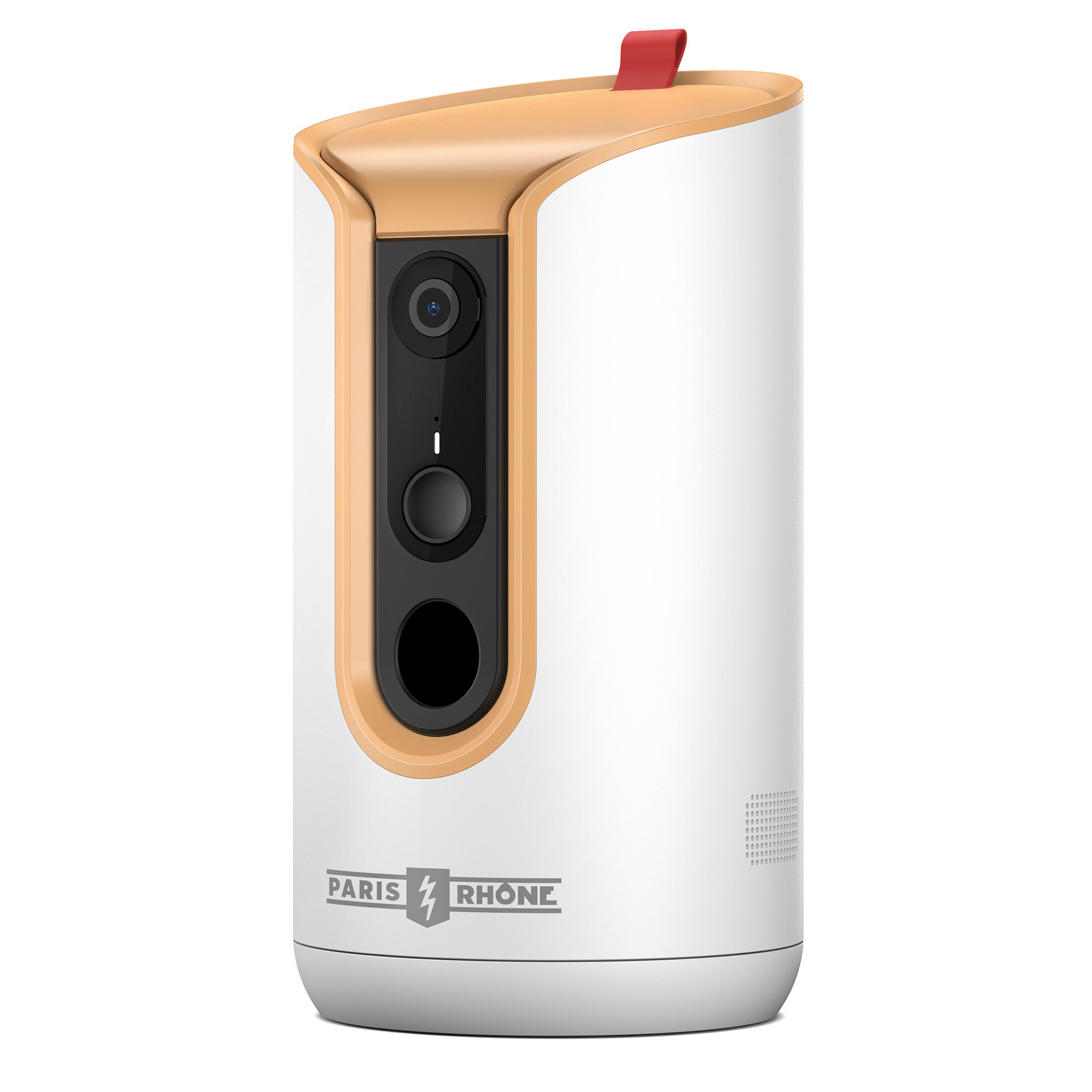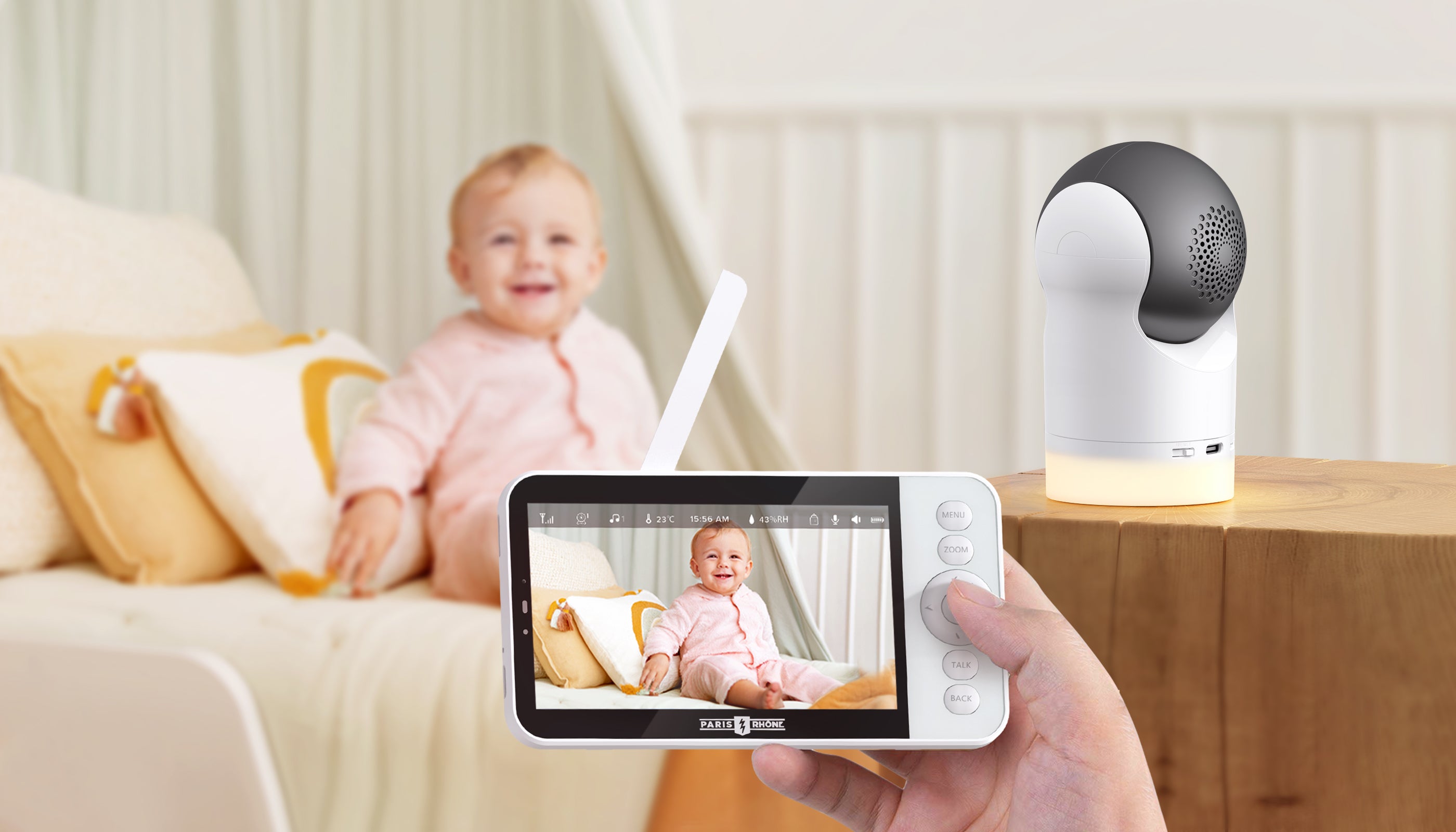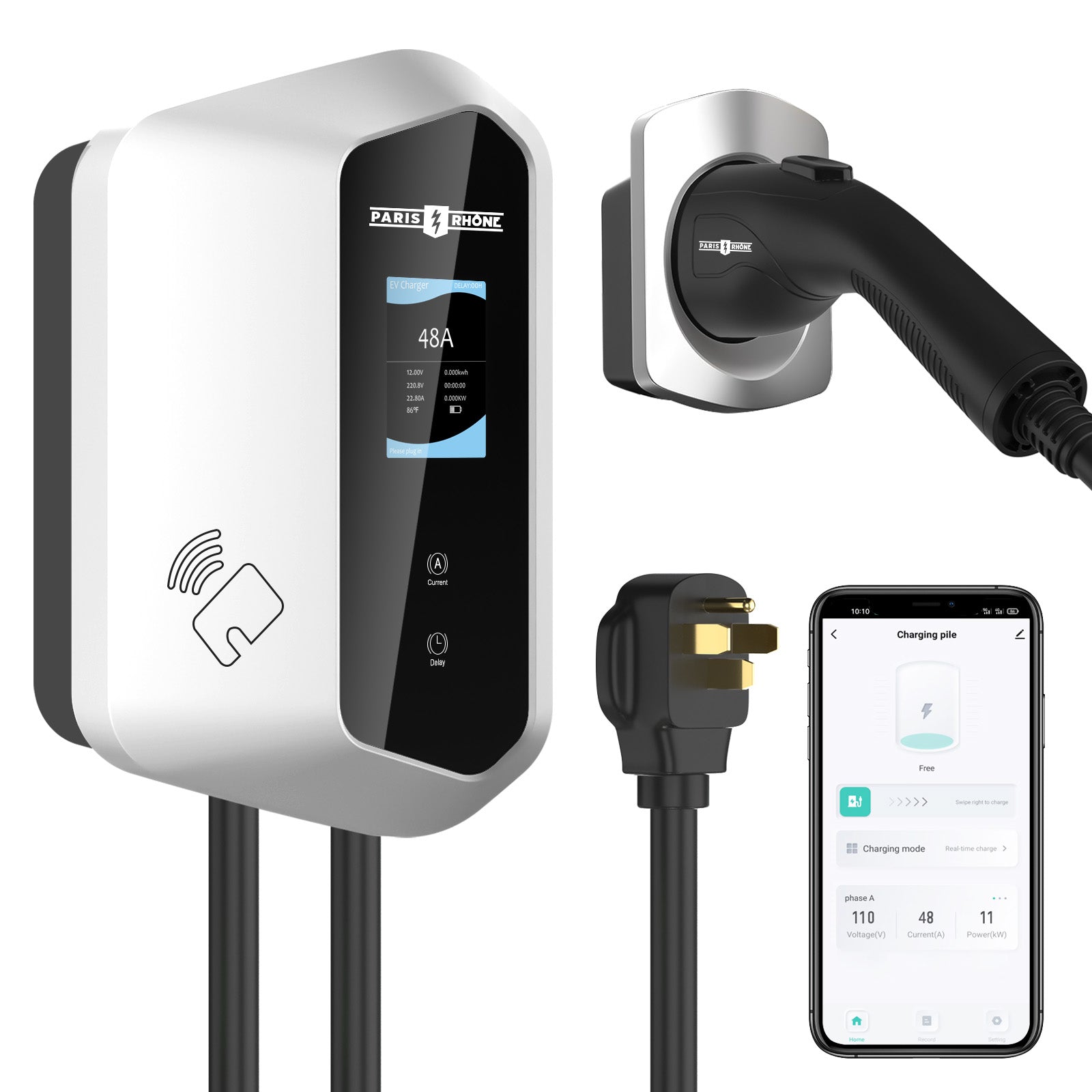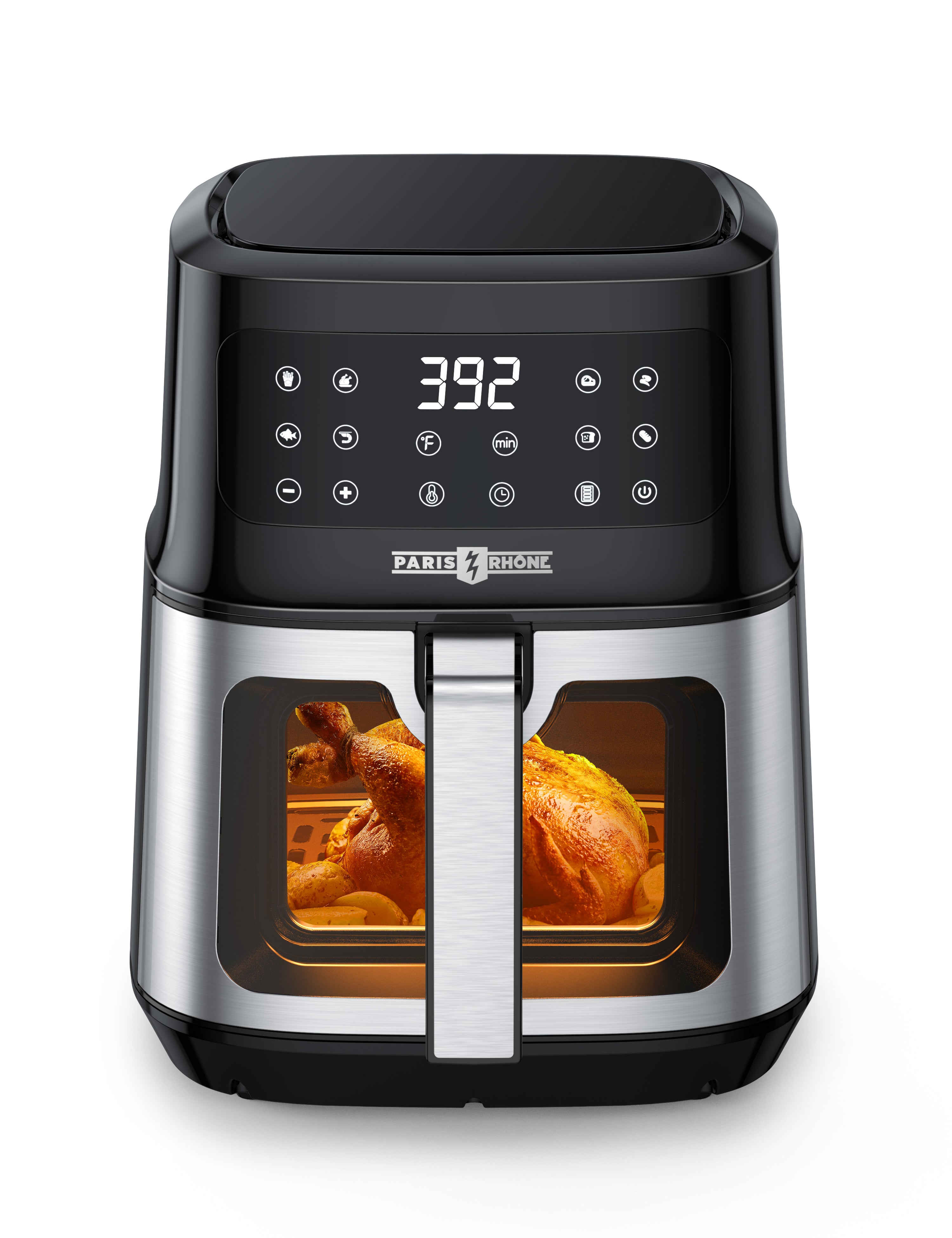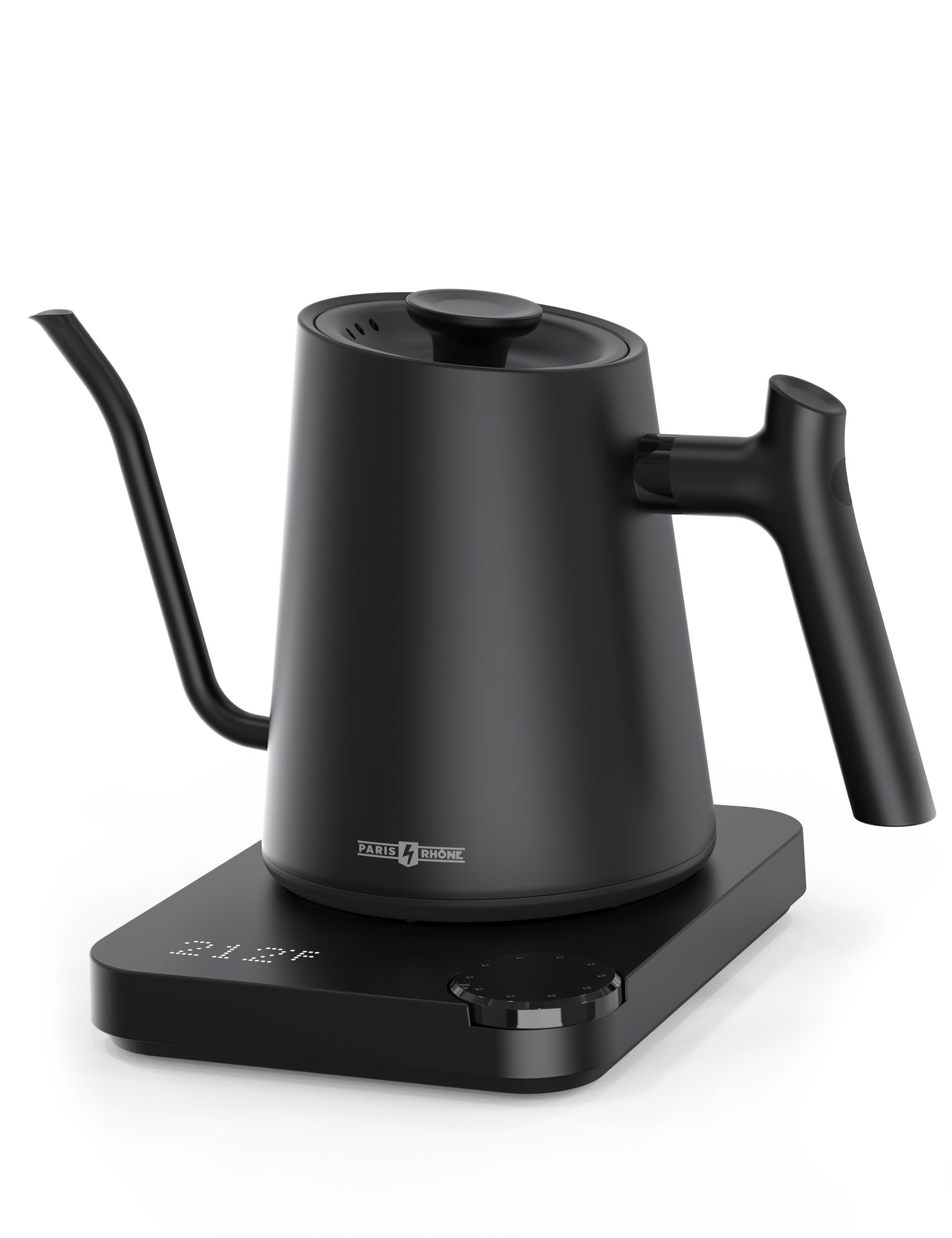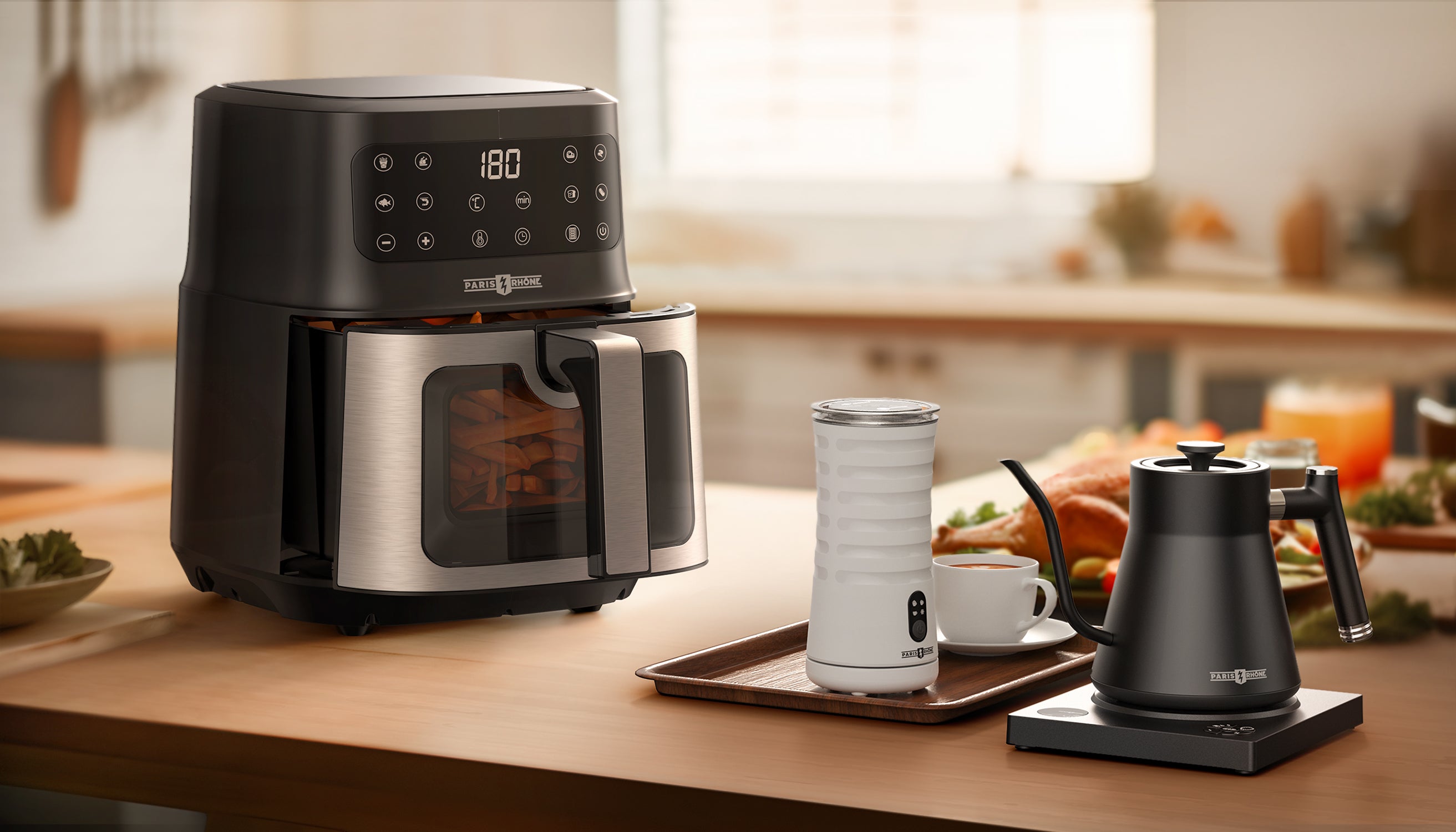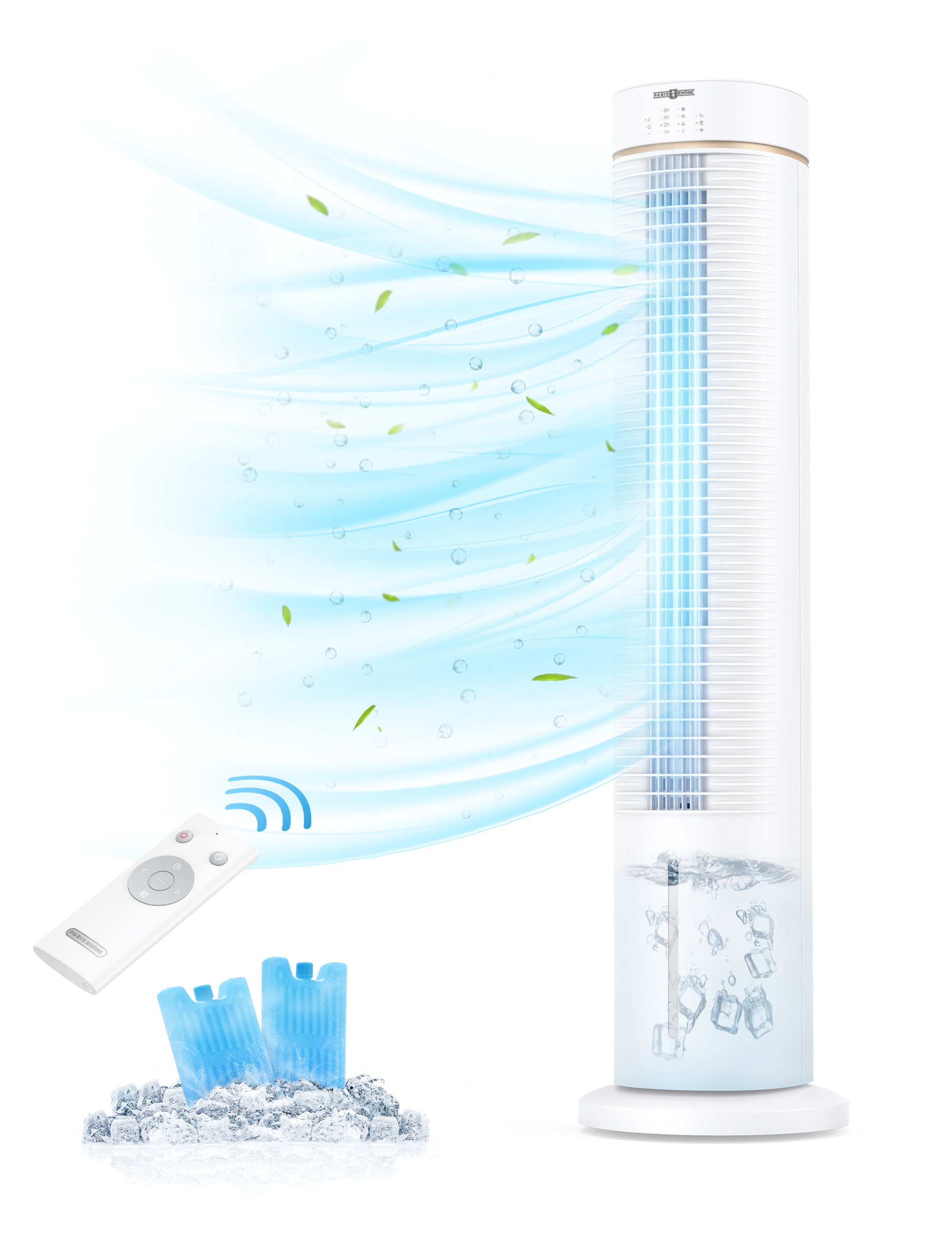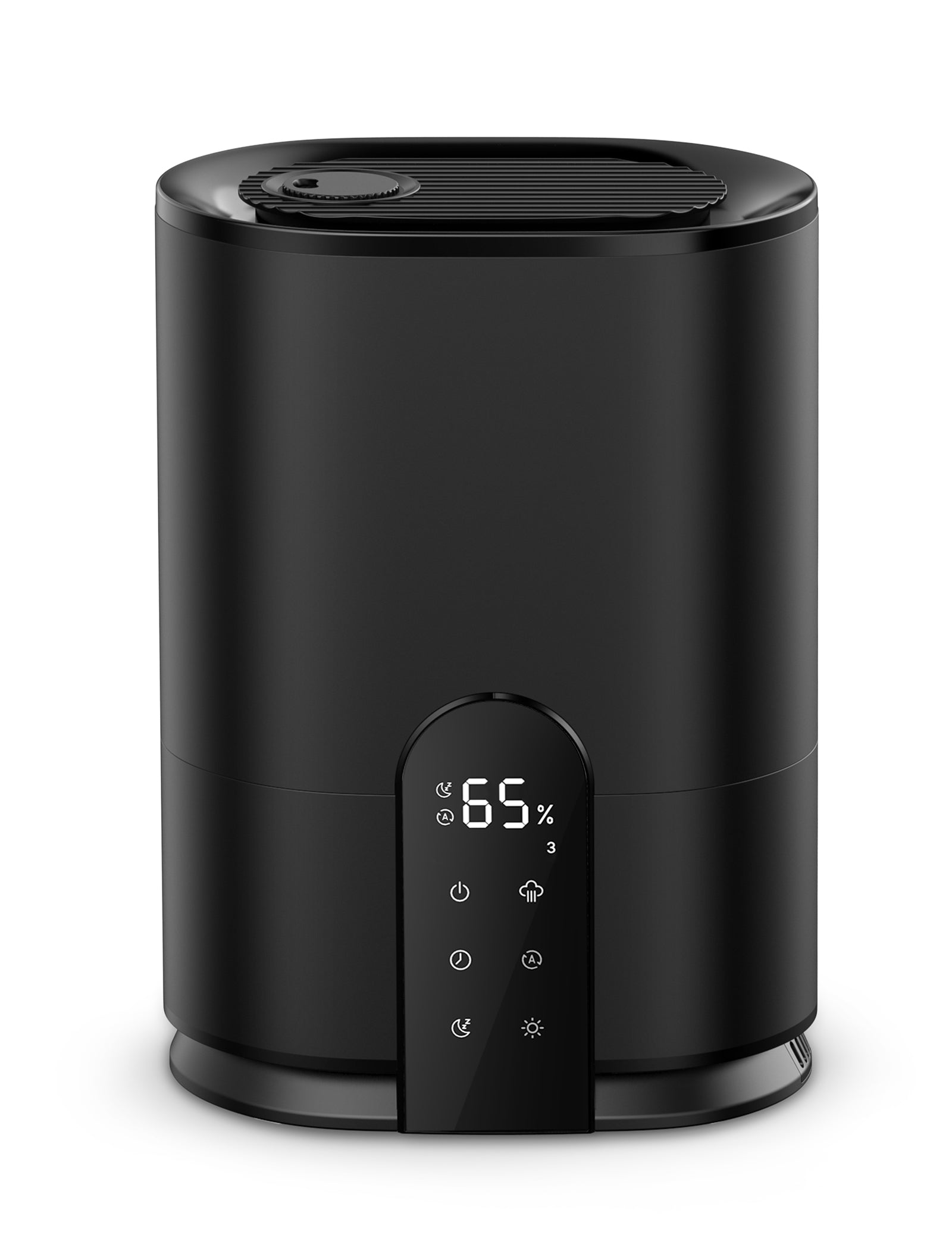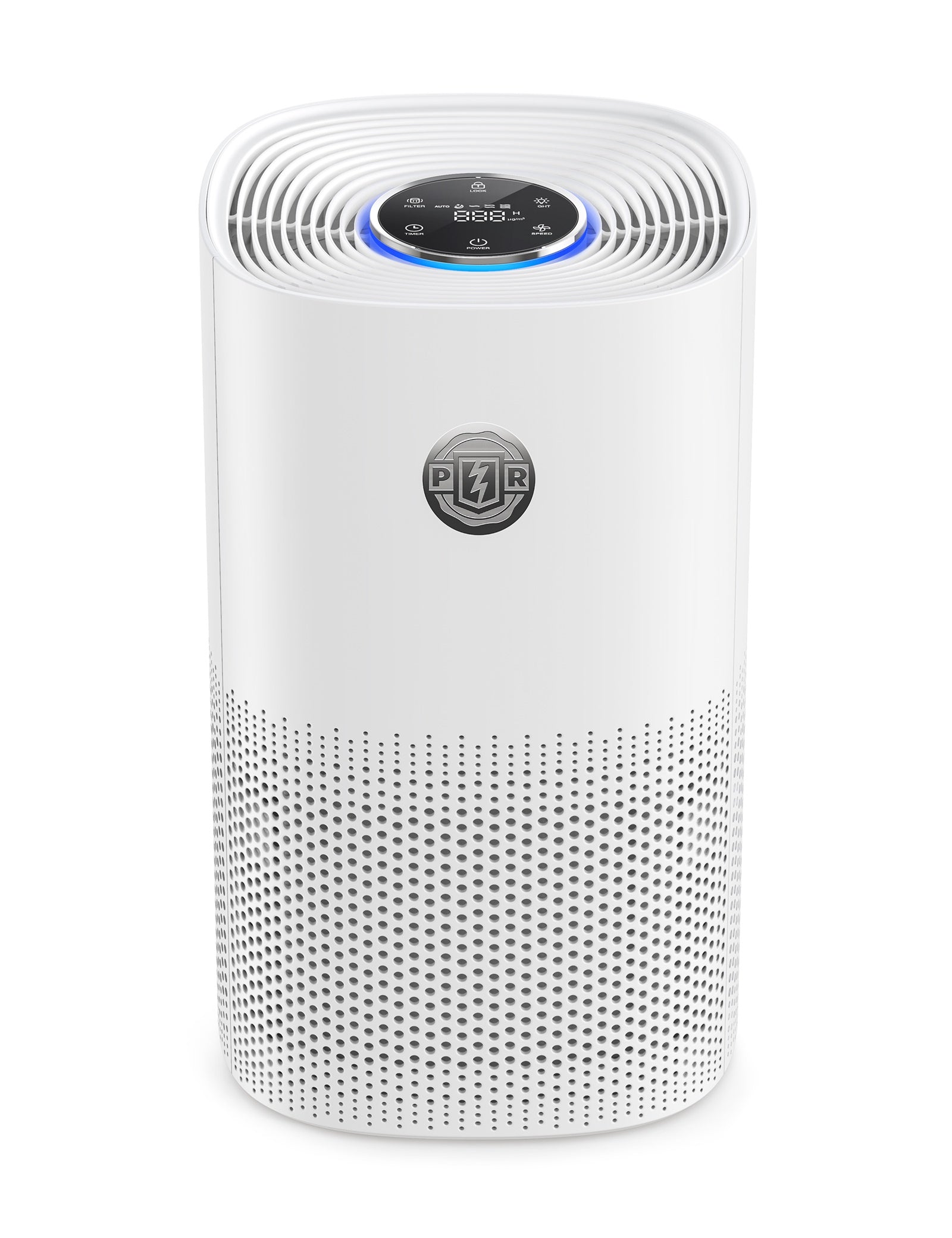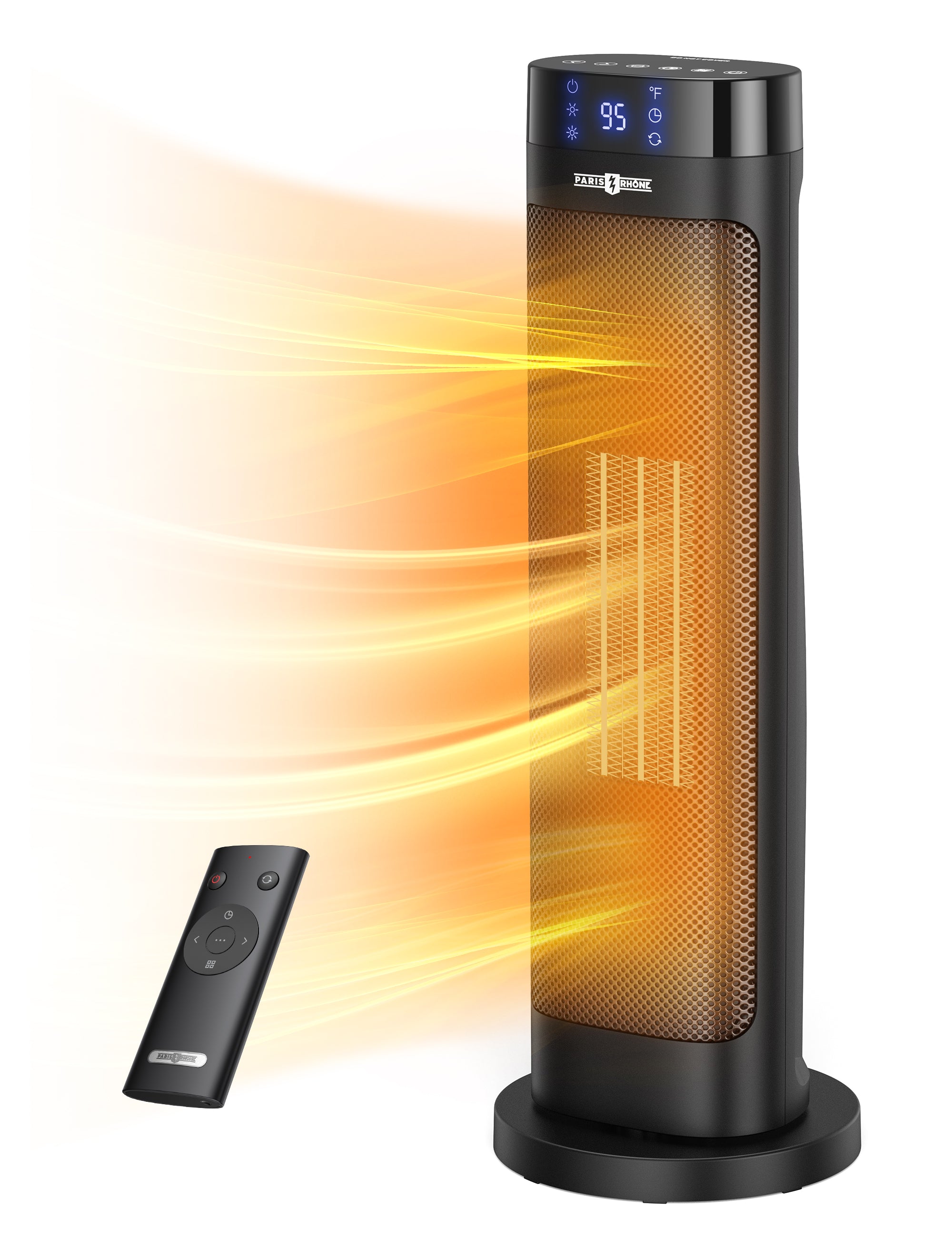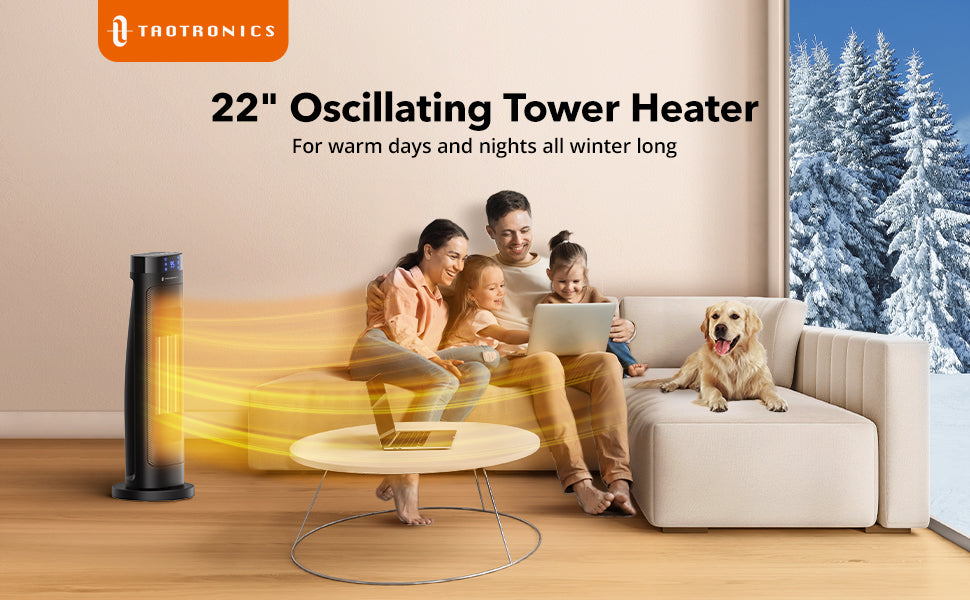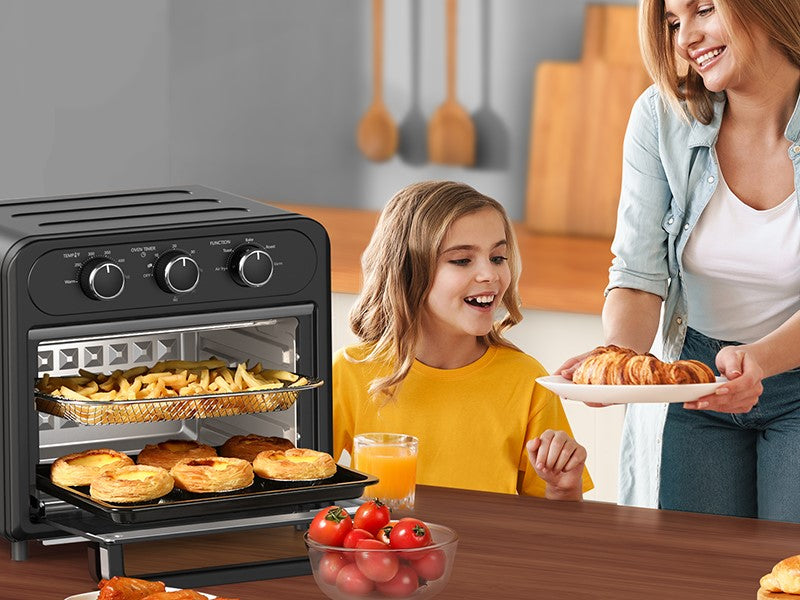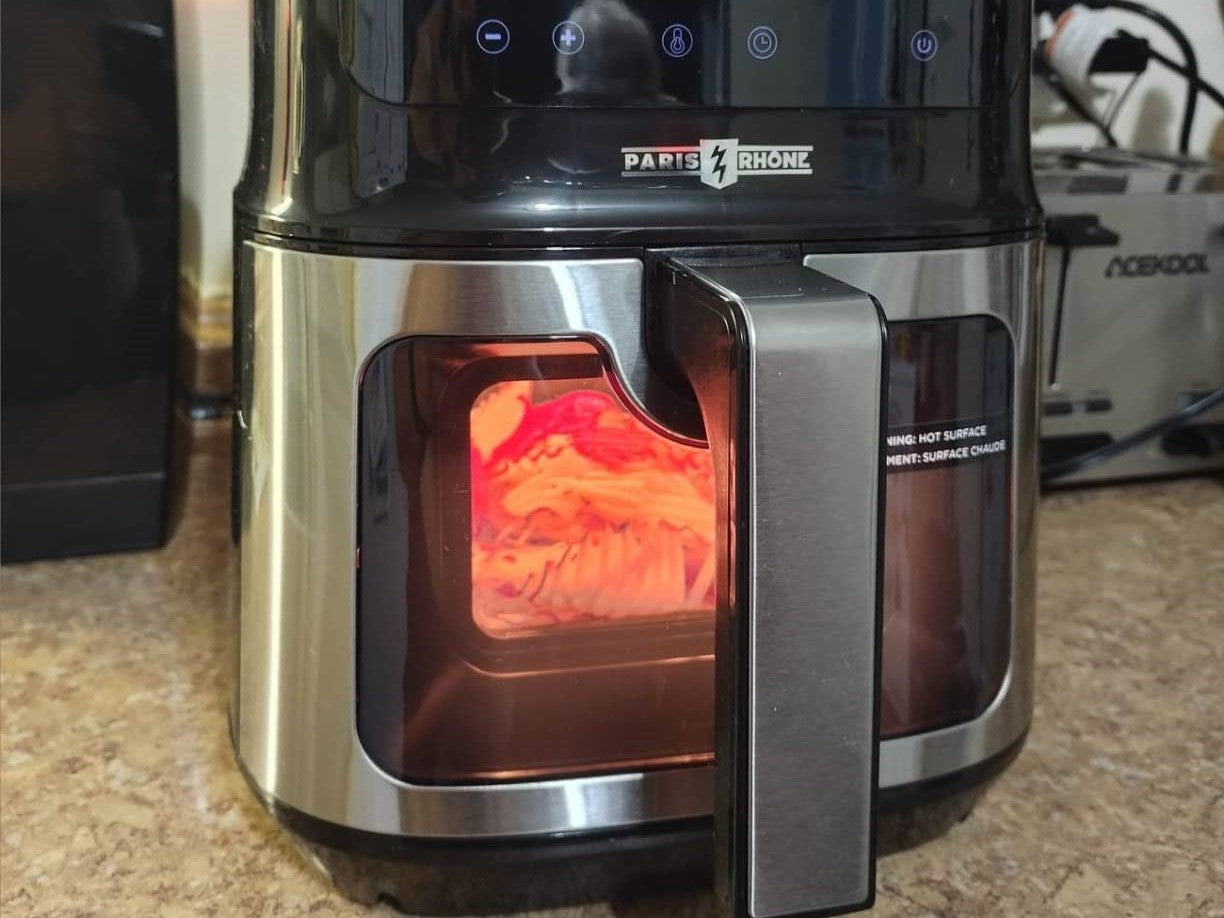As one of the latest smart kitchen invention, Air fryer oven has become incredibly popular in recent years for their ability to cook up crispy fried favorites with less oil. With air fryer ovens now available, which combine air frying technology with more traditional oven functions, many home chefs are faced with a dilemma - should they opt for an air fryer oven or stick with a tried and true countertop oven?
In this blog we’ll compare air fryer ovens and standard countertop ovens to help you decide which is the better option for your cooking needs and kitchen setup. You may find that a countertop oven's larger capacity and flexibility serves you better, or that an air fryer oven is the perfect compact appliance for air frying and more in small spaces.
Cooking Capacity
One of the biggest differences between most air fryer ovens and full-size countertop ovens is capacity. The interior cooking space of a typical air fryer oven maxes out at around 5 quarts. This allows you to cook small batches of food, perfect for 1-4 people. With their compact size, air fryer ovens are ideal for cooking quick weeknight meals, small portions, or side dishes. The small capacity also means the air fryer oven preheats rapidly, allowing you to cook single servings on-demand. However, for larger families or meal prepping bigger batches, a standard countertop oven offers more space typically ranging from 15-30 quarts. With greater capacity, you can bake a whole chickens, broil multiple steaks, or roast a few sheets of vegetables at once.
Functionality
While air fryer ovens provide super convection heat and airflow for crispy “fried” results, standard countertop ovens provide greater functionality options. Most countertop ovens have options not just for baking but also broiling, convection baking, convection roasting, pizza cooking, toasting, warming and more. The versatility of a countertop oven makes it the workhorse of your kitchen for nearly any cooking task. An air fryer oven focuses specially on delivering that coveted air fried texture and crunch.
Performance
When it comes to frying up foods with the signature crispy crunch of deep frying with barely any oil, air fryers have the upper hand. The super hot air circulated throughout air fryer ovens replicates the results of deep frying minus most of the fat and calories. This rapid air circulation also means your foods cook faster than a traditional oven. However, for tasks like baking casseroles or roasting pans of veggies where crispiness isn’t the goal, a standard oven provides very even and consistent results.
Ease of Installation
When it comes to installation, air fryer ovens have a major advantage in their simplicity. Air fryer ovens are countertop appliances that only need to be placed on a stable surface, plugged into an outlet, and you're ready to start cooking. Standard countertop ovens usually need to be installed in or under cabinetry, with careful measurement and drilling to mount the oven properly. Electrical work may also be required for a hardwired connection. Proper ventilation needs to be ensured for integrated countertop ovens as well. For those who want a simpler and quicker installation process, air fryer ovens that sit neatly on the counter provide the lowest effort option.
Ease of Use
Air fryer ovens provide quick and easy cooking with minimal preheating time required. Their settings also tend to be more tailored to specific cooking tasks like frying, roasting, or baking. However, with more plastic materials and compact size, air fryers need to be cleaned frequently to avoid oils and grease from accumulating. Standard countertop ovens made of stainless steel are easier to wipe down and maintain. The larger capacity does mean slightly more complex controls and more preheating time. But overall, countertop ovens are simple to use workhorses designed for regular cooking tasks.
Cost
One of the appealing aspects of air fryers is their price. You can purchase a basic air fryer oven for $80 to $150 dollars for a decent sized model. Comparable countertop ovens run from $200 on the very low end to $500 for higher end models with greater durability and features. However, since countertop ovens use less energy for everyday baking tasks than continuously running an air fryer, the long term operating costs are lower.
Safety
Air fryers reach extremely high temperatures and cook foods very quickly, so most models have advanced safety features like auto shut off if the basket is removed. Countertop ovens don’t get quite as hot, with average max temps around 450-500°F depending on the model. All should come with standard safety features like non-tip shelves and overheat auto shut-off as well. Don't store anything on top of or around either appliance that could catch fire or melt.
Aesthetics
Air fryers have plastic outer bodies that come in a variety of colors to match your kitchen design. Their smaller footprint allows them to fit easily on a counter without taking up your whole workspace. Countertop ovens are often much larger with metal and glass exteriors to match more premium kitchen aesthetics. They take up more counter real estate but provide a substantial cooking capacity.
Conclusion
For many home cooks, choosing between an air fryer oven or a countertop oven comes down to balancing counter space with cooking needs. Air fryer ovens are compact appliances perfect for small kitchens that deliver quick and crispy air fried results. But they have smaller capacities and more limited functionality than traditional ovens. Standard countertop ovens take up more space but allow you to cook larger batches, have more cooking mode options, and may integrate seamlessly into an existing oven setup. Assess your own meal planning, cooking needs and kitchen space to decide if the compactness and specialty of an air fryer oven or the versatility of a countertop oven is the best fit.




